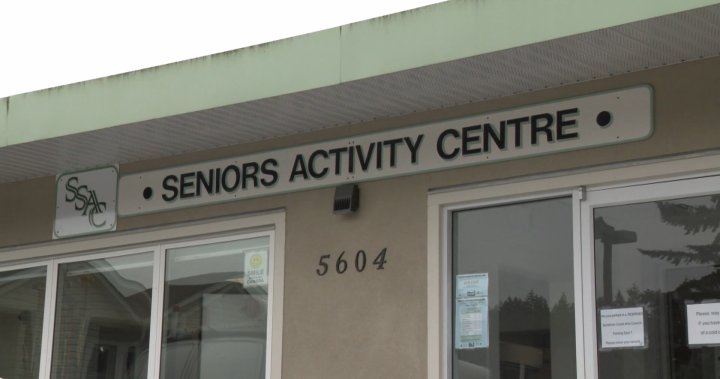As the grey dawn breaks over Victoria’s James Bay neighbourhood, Marjorie Wilson, 78, arranges chairs in the community room of the James Bay New Horizons Society. For twenty years, this centre has been her second home.
“We’re barely keeping the lights on,” she confides, straightening a stack of well-worn board games. “Last month, we had to cancel our computer literacy program because we couldn’t afford to replace the broken monitors.”
Across British Columbia, senior centres like James Bay are facing unprecedented financial pressures. A perfect storm of inflation, increased demand, and stagnant provincial funding has created what many directors describe as an existential crisis for these vital community hubs.
The provincial budget released last month allocated $15.3 million for senior community supports—unchanged from the previous fiscal year despite inflation running at 3.7% according to Statistics Canada’s latest report. Meanwhile, BC’s senior population has grown by nearly 4% annually since 2020.
“We’re expected to serve more people with effectively less money,” explains Devon Michaels, executive director of the BC Association of Senior Centres. “Many centres are making impossible choices between building maintenance, program offerings, and even reduced hours.”
At Kelowna’s Rutland Senior Centre, attendance has increased 27% over three years while operational funding has remained flat. Director Sarah Okanagan describes watching seniors line up outside before opening hours just to secure a spot for lunch service.
“For many, it’s not just about the meal—which costs us more to provide every month—it’s about having somewhere to go, people to talk to,” Okanagan says. “When we had to cut Friday afternoon social programs, I had three regulars in tears. They told me those few hours were what got them through the weekend.”
BC Minister of Seniors Terry Beech acknowledged these challenges during a recent committee hearing but pointed to federal-provincial healthcare investments as indirect support for seniors’ wellbeing. Critics call this response inadequate.
“Healthcare doesn’t replace community,” argues Dr. Melissa Zhang, gerontologist at UBC. “Senior centres provide essential social connection that prevents isolation, which research shows can be as damaging to health as smoking 15 cigarettes daily. The province is being penny-wise and pound-foolish.”
In rural communities, the funding crunch hits particularly hard. The Golden Years Society in Quesnel has resorted to volunteer staff handling administrative duties after laying off their only paid coordinator. Board president Robert Keane, 83, now works 30 hours weekly managing operations.
“I’m supposed to be retired,” Keane says with a wry smile. “But if I don’t do it, who will? Our members depend on this place.”
Financial records from twelve BC senior centres reviewed for this article reveal troubling patterns—average utility costs up 22%, food expenses increased 31%, while municipal grants have declined 4% in real dollars. Six centres reported depleting emergency reserves just to maintain basic services.
The Surrey Seniors Activity Centre, serving one of BC’s fastest-growing older populations, has instituted membership fee increases for the first time in eight years. Even with the additional revenue, they’ve eliminated transportation services that brought mobility-challenged seniors to programs.
“We’re abandoning the most vulnerable,” laments program coordinator Jinder Singh. “The members who most need our services are precisely those who can’t get here on their own. It’s heartbreaking to get those calls asking if the shuttle is running and having to say no.”
Advocacy groups like the Council of Senior Citizens’ Organizations of BC (COSCO) have launched a letter-writing campaign urging Premier David Eby to address the funding gap in the next budget cycle. They’ve collected over 7,000 signatures highlighting personal stories of how senior centres impact lives.
“These aren’t luxury services,” emphasizes COSCO president Louise Taylor. “For thousands of BC seniors, these centres represent their primary social outlet, a lifeline to community resources, and often access to affordable nutrition.”
The Ministry of Seniors’ office provided a statement indicating that a review of community funding models is underway, with recommendations expected this fall. For centres struggling now, that timeline offers little immediate relief.
Back at James Bay, Marjorie Wilson helps a new member fill out paperwork. When asked how long the centre can continue under current financial constraints, she pauses.
“We’ve started selling homemade preserves and crafts just to cover the heating bill,” she says. “Our generation has weathered plenty of storms, but I worry about the seniors who’ll need this place tomorrow. Where will they go if we can’t keep the doors open?”
As British Columbia’s population continues to age—projections show seniors will represent nearly 25% of provincial residents by 2030—the question remains whether community infrastructure will survive to meet their needs.
For now, centres like James Bay keep operating on passion, volunteer hours, and increasingly creative fundraising efforts. But as Wilson puts it while closing up for the day: “Even the most determined senior can’t run on goodwill forever.”






